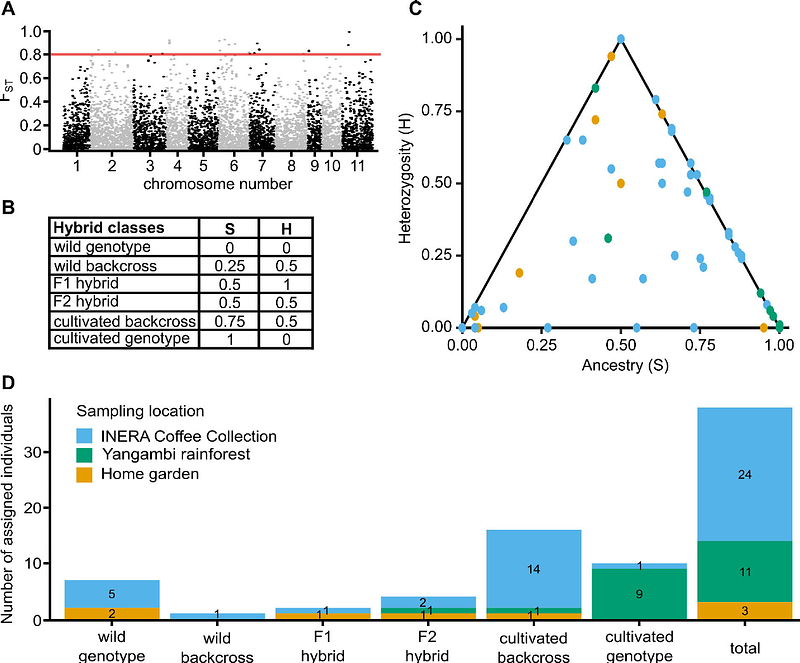Cultivated Robusta coffee meets wild Coffea canephora: Evidence of cultivated-wild hybridisation in the Democratic Republic of the Congo

Cultivated Robusta coffee meets wild Coffea canephora: Evidence of cultivated-wild hybridisation in the Democratic Republic of the Congo
Depecker, J.; Verleysen, L.; Bollen, R.; Asimonyio, J.; Hatangi, Y.; Kambale, J.-L.; Mwanga Mwanga, I.; Ebele, T.; Dheda, B.; Stoffelen, P.; Ruttink, T.; Vandelook, F.; Honnay, O.
AbstractBackground and aims: Plant breeders are increasingly turning to crop wild relatives (CWRs) to ensure global food security amidst a rapidly changing environment. However, CWR populations are confronted with various human-induced threats, including hybridisation with their nearby cultivated crops, posing a significant threat to the wild gene pool. Here, we focussed on Robusta coffee in the Yangambi region in the DR Congo, where cultivated Robusta coffee coexists with its wild relative (Coffea canephora), creating ample opportunity for genetic exchange. We examined the geographical distribution of cultivated Robusta coffee plants and the incidence of hybridisation between cultivated and wild individuals within the rainforest. Methods: We used Genotyping-by-Sequencing data from 471 C. canephora individuals across various locations, including natural rainforests, home gardens, and the INERA Coffee Collection, a Robusta coffee field genebank. Our analyses involved establishing robust diagnostic fingerprints that differentiate cultivated from wild coffee, identifying cultivated-wild hybrids and mapping their geographical position. Key results: We identified cultivated genotypes and cultivated-wild hybrids in zones with clear anthropogenic activity, and where Robusta coffee cultivated in the home gardens may serve as a source for crop-to-wild gene flow. We found relatively few hybrids and backcrosses in the rainforests, which is so far likely not sufficient for the stable incorporation of alleles from the cultivated gene pool into the CWR gene pool. Conclusions: The cultivation of Robusta coffee in close proximity to its wild gene pool has led to cultivated genotypes and cultivated-wild hybrids appearing within the natural habitats of C. canephora. Yet, given the high overlap between the cultivated and wild gene pool, together with the relatively low frequency of hybridisation, our results indicate that the overall impact in terms of risk of introgression remains limited so far. Nevertheless, it is important to continue monitoring crop-to-wild gene flow to safeguard the wild gene pool of C. canephora.